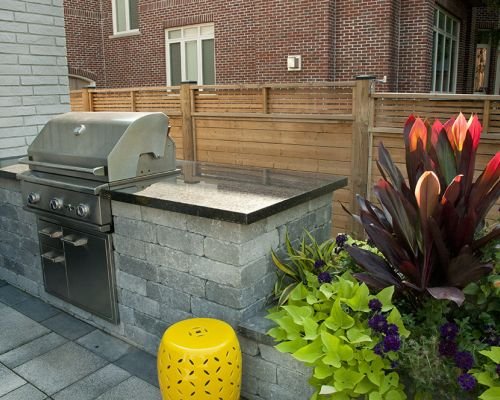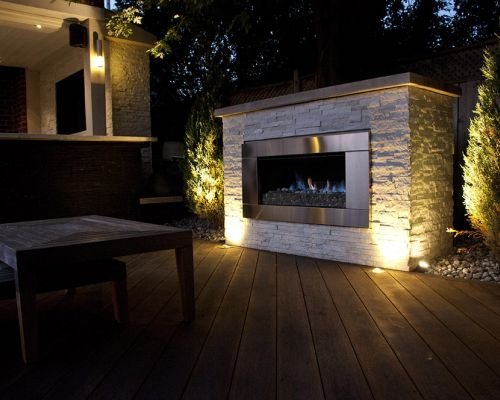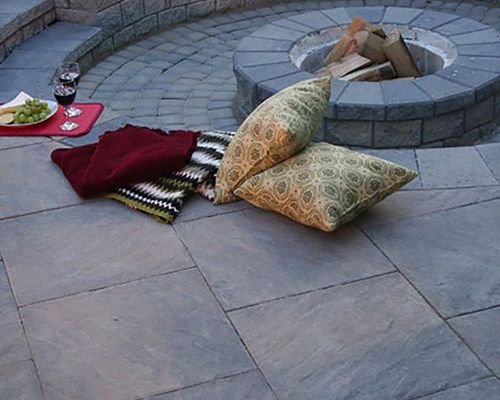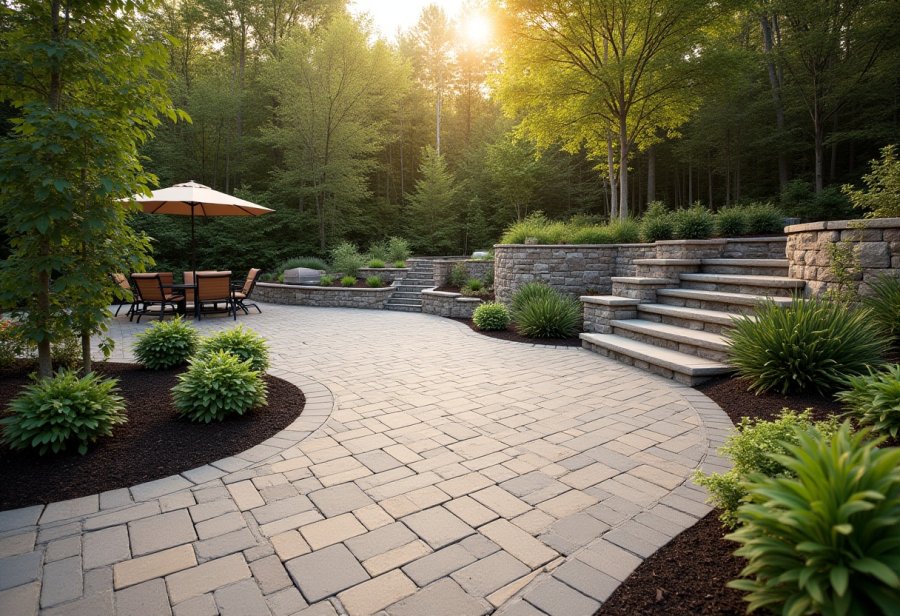Imagine transforming your Toronto yard into a stunning, eco-friendly retreat that seamlessly balances beauty and sustainability. How can homeowners craft outdoor spaces that are visually captivating while supporting local ecosystems and enduring Toronto’s four-season climate? This guide explores the transformative power of native plants, permeable materials, and water conservation techniques like rain gardens and rain barrels, proving that elegance and responsibility can coexist. It emphasizes collaborative design rooted in client preferences, integrating practical approaches that are easy to implement and maintain over time. The future of landscape design promises innovative solutions—recycled materials, climate-adaptive native species, and smart technology—that make sustainable outdoor living more accessible. Will these advancements redefine how we experience outdoor spaces in Toronto? The journey toward resilient, beautiful, and environmentally responsible landscapes is ongoing, inviting homeowners to rethink what’s possible—and to embrace a greener, richer outdoor life.
Transform Your Toronto Backyard with Expert Landscape Design
Looking to elevate your outdoor space in Toronto? Toronto Landscape & Design (TLD) offers exceptional services including natural stone installations, water gardens, irrigation systems, and retaining walls. Our award-winning designers take everything into consideration to create stunning, functional backyards that reflect your style. Whether you’re seeking a peaceful retreat or an entertainment area, our team ensures every detail is perfect. Discover how a backyard makeover can transform your outdoor living experience. Contact us today at 1.416.644.0499 or email mike@torontolandscapedesign.com to start your journey toward a breathtaking backyard.

Transform Your Toronto Yard Into a Stunning, Eco-Friendly Retreat
Transforming Toronto yards into beautiful, sustainable outdoor retreats goes beyond just creating a pleasing view—it’s about designing spaces that harmonize with the environment and enhance daily life. A well-thought-out yard can serve as a peaceful escape after a busy day, a lively setting for family gatherings, or a quiet haven that connects you to nature. The goal is to blend visual appeal with eco-friendly practices, ensuring your outdoor space is both stunning and responsible.
Given Toronto’s distinct four-season climate, choosing the right plants, materials, and features is crucial for long-term success. A successful design considers seasonal changes, drought resistance, and soil conditions, making sustainability a core principle. This approach not only reduces water and chemical use but also supports local ecosystems, creating a resilient landscape that thrives year-round.
Every yard tells a story, and understanding your vision helps turn that story into reality. Whether you dream of lush native gardens, low-maintenance patios, or multi-functional outdoor living areas, listening to your needs guides the entire process. When your ideas align with practical considerations like budget and upkeep, the final result becomes a true reflection of your lifestyle and values.
Designing with sustainability in mind involves smart choices from the ground up. Native plants, which are naturally adapted to Toronto’s climate, require less water and fewer chemicals. Incorporating eco-friendly materials like recycled pavers or permeable surfaces helps manage stormwater and reduces runoff, supporting local drainage systems and groundwater recharge. These choices demonstrate that beauty and responsibility can coexist seamlessly.
Incorporating features like rain gardens or drip irrigation not only conserves water but also adds visual interest to your yard. Rain barrels collect rooftop runoff, providing a sustainable water source that minimizes waste. These strategies ensure your landscape remains vibrant, even during periods of drought or heavy rain, while keeping maintenance manageable.
Supporting biodiversity through native plants and habitat zones turns your yard into a thriving ecosystem. Attracting pollinators and birds enriches the ecological health of your outdoor space. Thoughtful zoning creates areas for relaxation or entertainment, blending ecological benefits with practical use. This approach transforms your yard into a vibrant, eco-responsible retreat.
Sustainable landscaping is an ongoing process. Regular practices like mulching, soil testing, and eco-friendly pest control maintain plant health and resilience. Seasonal adjustments and proactive care keep your yard beautiful and functional over time, proving that eco-friendly landscapes are both practical and enduring.
Ultimately, transforming your yard into a beautiful, sustainable outdoor retreat is about creating harmony between aesthetics and ecology. It’s a journey that combines thoughtful design, local climate knowledge, and ongoing stewardship. The result is a space that not only elevates your home’s appeal but also contributes positively to the environment—proof that beauty and sustainability can truly coexist.
Core Principles of Sustainable Landscape Design
Sustainable landscape design is rooted in making choices that benefit both the environment and the visual appeal of your yard. Central to this approach are native plants—species that are naturally adapted to Toronto’s climate and soil. These plants require less water, fertilizers, and pesticides, making them easier to care for while supporting local ecosystems. By selecting native wildflowers, shrubs, and grasses, you foster a balanced environment that attracts pollinators and promotes biodiversity.
Using eco-friendly materials is another key practice. Permeable pavers, recycled stones, and reclaimed wood help manage stormwater by allowing rain to seep into the ground naturally. These materials reduce runoff, prevent erosion, and support groundwater recharge, all while adding a natural, textured look to your landscape. Choosing recycled and biodegradable options minimizes resource consumption and aligns your yard with sustainable principles without sacrificing style.
Water conservation techniques are vital in eco-conscious landscaping. Installing rain gardens to capture runoff, or drip irrigation systems that deliver water directly to plant roots, significantly cut water waste. Rain barrels can collect rooftop runoff, providing a free, sustainable water source for your garden. These strategies help your landscape endure droughts and heavy rains, maintaining its vibrancy with less resource use and effort.
Supporting biodiversity through thoughtful planting is equally important. Incorporating native shrubs, wildflowers, and small habitat zones attracts bees, butterflies, and birds, enriching your yard’s ecological health. Creating designated zones for relaxation, play, or entertainment ensures your outdoor space remains functional and inviting. These features turn your garden into a thriving habitat that’s both beautiful and ecologically responsible.
Maintaining a sustainable landscape involves ongoing practices like mulching, soil testing, and eco-friendly pest management. Regular soil enrichment and seasonal adjustments help plants respond well to weather changes and pests. By tending to your yard proactively, you preserve its resilience and beauty over time, proving that eco-friendly landscapes are practical and long-lasting.
Designing with these principles in mind creates a yard that is resilient, low-maintenance, and environmentally sound. Native plants and permeable materials blend seamlessly to reduce resource consumption, while water-saving features ensure your landscape remains lush during dry spells. This holistic approach transforms outdoor spaces into beautiful, sustainable retreats that support the local environment.
Incorporating biodiversity zones and habitat features not only enhances ecological health but also adds visual interest. Pollinator gardens and native plant beds attract wildlife, creating a lively, dynamic environment. These elements foster a deeper connection to nature, making your yard a true extension of your commitment to sustainability.
Sustainable landscape design is an ongoing journey. With regular care, adaptive management, and a focus on native, eco-friendly choices, your outdoor space can flourish year-round. This approach demonstrates that beauty and responsibility go hand in hand, giving you a landscape that’s as resilient as it is stunning.

Aligning Landscape Innovation with Homeowner Visions
Understanding what homeowners want from their outdoor spaces is key to creating landscapes that truly resonate. Starting with open conversations helps uncover their vision—whether they dream of a lush garden retreat, a low-maintenance yard, or an area built for entertaining. Listening carefully and asking thoughtful questions ensures you grasp their priorities, setting a strong foundation for a design that feels personal and functional.
Using visual tools like sketches or mood boards makes abstract ideas tangible. When clients see their dreams mapped out, they can better visualize how different elements will come together. This collaborative process fosters trust, encourages feedback, and allows adjustments to be made early, so the final plan aligns perfectly with their lifestyle and aesthetic preferences. It’s about turning their ideas into a shared vision.
Practical considerations also shape the design. Budget limits, maintenance expectations, and future plans influence what features are included and how they’re implemented. Asking about how much time clients want to spend caring for their yard or what activities they envision helps ensure the space supports their routines. When clients feel heard and their concerns addressed from the start, the project proceeds smoothly, and satisfaction is higher.
Throughout the design process, ongoing communication keeps everyone on the same page. Sharing detailed sketches or digital renderings allows homeowners to see progress and suggest tweaks. Their involvement creates a sense of ownership, making the process more engaging and reducing surprises during installation. Transparency and collaboration make the final outcome more likely to meet or exceed expectations.
Adding personal touches elevates a yard from simply functional to memorable. Features like a cozy fire pit, a water fountain, or carefully chosen lighting reflect the client’s lifestyle—whether they love hosting friends or enjoy peaceful solitude. These details give the outdoor space a unique character, turning it into a true extension of their personality. By balancing style with practicality, you craft a landscape that’s not only beautiful but also meaningful to its owners.
For those interested in exploring further, understanding how to effectively incorporate these elements can make a significant difference. Learning more about sustainable landscape practices and innovative design ideas can inspire new approaches. You might find it helpful to read about how to align your landscape design with your goals by visiting how to align your landscape design with your goals.
From Theory to Practice: Real-World Sustainable Landscaping Solutions
Bringing sustainable landscape principles into real-world projects means applying practical strategies that homeowners and designers can easily implement. For example, a Toronto backyard might feature a rain garden designed to capture runoff, which not only conserves water but also adds lush greenery and visual interest. Rain gardens help filter pollutants and prevent local flooding, proving that eco-friendly features can be both functional and attractive. Similarly, replacing traditional paving with permeable materials like recycled pavers or crushed stone allows rainwater to seep into the ground naturally, supporting groundwater recharge and reducing erosion during heavy rains or droughts.
Water-saving techniques are straightforward yet impactful. Installing drip irrigation systems ensures water is delivered directly to plant roots, minimizing waste and promoting healthier growth. Rain barrels that collect rooftop runoff provide a sustainable, free water source, reducing reliance on municipal supplies. These simple adjustments can significantly lower water use while maintaining a vibrant, lush landscape that endures dry spells and heavy rainfall alike. They also make ongoing maintenance easier and more environmentally responsible.
Native plants play a central role in creating resilient, low-maintenance landscapes. Incorporating species like wildflowers, shrubs, and grasses suited to Toronto’s climate attracts pollinators and supports biodiversity. Native plants require less watering, fertilizers, and pesticides, which cuts down on chemical inputs and maintenance costs. Their adaptability ensures your yard remains beautiful year-round with minimal intervention. Integrating native flora also fosters a stronger connection to local ecosystems, turning your outdoor space into a thriving habitat.
Design features that support biodiversity, such as habitat zones with native plants or small pollinator gardens, encourage bees, butterflies, and birds to visit. Thoughtful zoning—separating play areas from planting beds—keeps your yard functional while enhancing ecological health. These features create a lively environment that’s as ecologically beneficial as it is visually appealing, transforming your landscape into a vibrant, sustainable retreat. Regular practices like mulching, soil testing, and eco-friendly pest management help maintain this balance, ensuring your landscape stays healthy and resilient over time.
Maintaining these sustainable landscapes involves ongoing care that is both manageable and effective. Seasonal adjustments, soil enrichment, and eco-conscious pest control keep your plants thriving through changing weather and pests. Regular mulching and soil testing improve plant resilience, while adaptive management ensures your yard remains vibrant and functional. By committing to these practices, you create a landscape that not only looks beautiful but also supports long-term ecological health, proving that eco-friendly landscaping is an ongoing journey of care and stewardship.

Shaping the Future of Eco-Conscious Outdoor Spaces in Toronto
The future of outdoor design in Toronto is poised to be both innovative and deeply rooted in sustainability. Advances in eco-friendly materials, like recycled and biodegradable options, are making it easier for homeowners to craft landscapes that are as beautiful as they are environmentally responsible. Smart irrigation systems and climate-responsive planting techniques are gaining traction, helping yards adapt to changing weather patterns while conserving vital resources. These technological innovations are making sustainable landscaping more accessible and effective, pushing us toward outdoor spaces that are resilient, low-maintenance, and visually captivating.
Native plants will continue to play a central role in shaping Toronto’s outdoor spaces. As research uncovers more resilient, climate-adapted native species, the variety available to homeowners will expand. This shift not only reduces environmental impact but also simplifies ongoing care, making sustainable landscapes more manageable and affordable. The integration of native flora with modern design principles creates outdoor environments that are both functional and ecologically supportive, aligning beauty with responsibility.
Emerging trends like modular installations and pre-fabricated landscape features are transforming how outdoor spaces are built and customized. These solutions offer flexibility, allowing homeowners to adapt or expand their yards over time without extensive renovations. They also promote sustainability by minimizing waste and reducing material consumption during construction. As these options become more refined, they will enable outdoor retreats that are versatile, personalized, and capable of evolving with their owners’ needs.
Technology continues to open new possibilities for outdoor living. Integrated lighting systems extend usability into the evening, while outdoor kitchens and entertainment zones turn yards into true extensions of the home. Thoughtfully designed, these features elevate outdoor spaces into welcoming, functional environments that encourage more frequent outdoor activities. They deepen the connection between homeowners and their surroundings, making outdoor retreats not just beautiful but also highly practical.
While these innovations promise exciting progress, challenges like cost and awareness remain. High-tech systems and premium eco-materials can be prohibitively expensive for some, highlighting the need for education and accessible solutions. Continued research into resilient native plants and sustainable materials is vital to ensure these advancements are affordable and widely available. As the industry evolves, landscapes built on sustainability and creativity will set new standards for outdoor living in Toronto, inspiring communities to embrace greener, more beautiful ways of enjoying their outdoor spaces.






